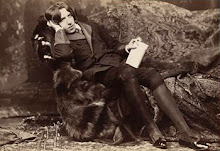
May 21: Constantine Starling (Constantine of the Chickens)
Saints Constantine and Helen celebration from the Orthodox calendar coincides in the folk tradition with the moment when it is believed that the birds teach the chicken how to fly. Constantine Starling is the patron of the forest birds. People don’t work on his day, being afraid of the birds which damage the crops.
This is generally the last day when corn, oat and millet are seeded.
Η ημέρα των ισαποστόλων Κων/νου και Ελένης, είναι για τη Ρουμανία η ημέρα των Πτηνών. Απαγορεύεται το κυνήγι τους, γιατί θεωρείται ότι μαθαίνουν τα μικρά τους να πετάνε. (Πολύ ωραίος ο παραλληλισμός της ρουμάνας μαθήτριας στα σχόλια με τη διδασκαλία και το άνοιγμα των φτερών των μαθητών). Στην Ελλάδα έχουμε τα αναστενάρια, για τα οποία παραπέμπουμε στο Ίντερνετ. Ευχαριστούμε τους συνεργάτες μας για τις ευχές τους!
21 Mai: Constantin Graur (Constandinu Puilor)
Sarbatoarea Sfintilor Constantin si Elena din calendarul ortodox coincide in traditia populara cu momentul in care se crede ca pasarile isi invata puii sa zboare. Constantin Graur este patronul pasarilor din paduri, iar de ziua sa nu se lucreaza, fiind pericol ca recoltele sa fie distruse de acestea.
Aceasta este de obicei ultima zi in care se mai seamana porumb, ovaz si mei.
" On 19 of May he put me to write some letters for my friends...." HERE THE excerpt that anticipate the next month celebrations...
 ANASTENARIA (Firewalking)
ANASTENARIA (Firewalking)
Library post:
Up north in Greece, in Salonica and Serres, people celebrate St Constantine's and Eleni's Day by Firewalking. After praying and preparing mentally, they tred on fire without getting burnt. This is no hoax or hysterical behaviour. People actually believe the saints preserve them from fire. "Anastenaria" means to sigh during the process. More about the custom here.
Διαβάστε για αναστενάρια με την ευκαιρία της γιορτής των Αγίων Κων/νου και Ελένης εδώ.

























3 comments:
Reading again this post i agree that the image with the bird which is teaching their sons to fly is relevant for what is happens between teacher and their students. And a good example is our teacher, Zoe, who has always been with us and gave us advices. Thanks teacher:)
Now how can a teacher resist answering such a topic? The way you put it, D., teaching is very close to parentship. I quite agree. Let me just remind what Alexander the Great used to say about it: My parents gave me life (zein) but my teachers taught me to live it well (eu zein).
As well I remember what a thinker believe (very possible was Greek..as all great thinkers of the world...):
The school is the place where you cannot know who is giving and who is receiving.That's why, I have to thank you, my dear students, for all things you offered me in these years.
Post a Comment